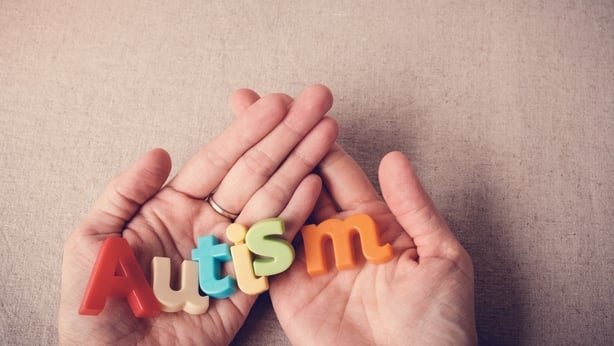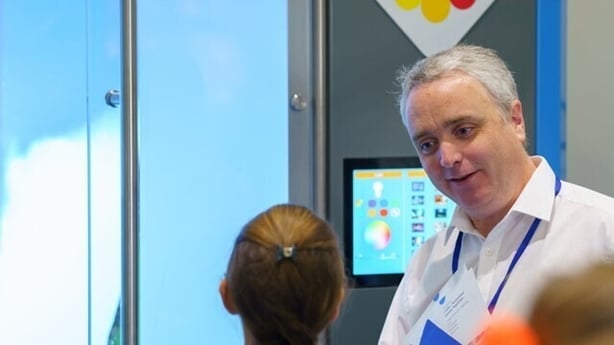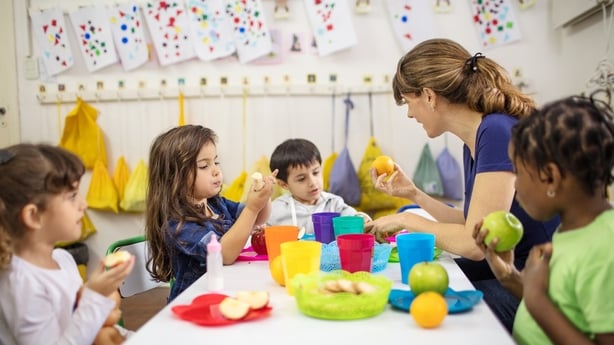There's likely many an invention that was kick-started by a spouse telling their significant other to stop talking about it and get off their behind and start making it. This type of intervention is what designer David McIntyre claims spurred him on to design and build the Cubbie booth.
When McIntyre's daughter was given a diagnosis of autism eight years ago, he told Shay Byrne on the Nine O’Clock Show that his first reaction to the news was denial:
"I hadn’t noticed it. I was working long hours at the time for a company and I was on the road a lot. It was my wife who had noticed that Ava wasn’t meeting her milestones and started the process to get a diagnosis. And when I was told, I must say, I was very angry about the labelling of my child, if you like."

David spoke to Shay about the Early Bird programme, which he credits with getting parents of children with autism up to speed with the diagnosis and filling them in on what to expect and what to look out for as their child develops.
It also, David says, teaches parents about sensory processing issues and teaches you that people with autism are not necessarily at a fixed point on the spectrum:
"It teaches you that autism is a spectrum and that the person can actually move on that spectrum at any time. Which frightened the life out of me and my wife. The idea is that your child could be verbal today and tomorrow be non-verbal and there forward be non-verbal. So, they can actually move on the spectrum at any time. So it’s quite a frightening diagnosis really for a parent."
When McIntyre was made redundant, he decided to strike out on his own as a designer. Then he was asked by a local school to design a sensory room for them. This led to him doing a lot of research into sensory rooms – which typically involve coloured lights, bubble tubes, music and soft furnishings to calm anxious children – and he realised that sensory rooms are mostly blunt instruments that aim to suit everybody, but possibly end up suiting very few:
"To work correctly, I found, you needed an Occupational Therapist to actually deliver the intervention. And what’s happening in schools of course, is that they don’t have that Occupational Therapy expertise at hand and so they just turn everything on, if you like."

The fact that David has two children with autism and they both have very different needs to each other made him realise that what would be most affective for children is personalised intervention. This led him to conclude that the Cubbie booth – effectively a personalised sensory room – needed its own suite of software:
"That development in the last three years has been remarkable. So, when you go up to a Cubbie now, it remembers who you are and it transforms the environment inside to match your sensory needs. And usually within 10 minutes you’re back in the classroom participating with your work."
What does a Cubbie look like? A lot of sensory rooms in schools tend to be in converted storage rooms, but a Cubbie is different:
"It’s a big pod. It’s wheelchair-accessible and there’s a touchscreen on the outside of it and inside is an audio-visual experience, if you like. And the idea is that it’s a blank canvas, so when you walk into it, if you don’t want any sensory input and you just want a white space, it can deliver that."
It can, of course, do much more than that. There are generally two different types of people with divergent sensory issues – hypo reactive, where the person is under reactive and hyper reactive, where the person is overreactive.

The aim of the Cubbie booth is to balance the person in the centre, so it calms the hyper reactive and energises the hypo reactive. And it’s not just for people with autism:
"We have different programmes now made by our Occupational teams for ADHD, for instance. They’re very different than the ones for people with autism."
Initially, David was reluctant to start working on the Cubbie booth because he knew there would be a lot of hard work involved. And that's when his wife Diane – co-founder of the company – stepped in:
"And my wife gave out to me one day. She said, 'Listen, you’re going to have to get off your backside and go and do it.’ So, she was the catalyst to get this done in the first place!"
David summed up what it is that the Cubbie booth and the company behind it – inspired by his daughters’ needs – is doing: reducing the anxiety that people are feeling. Sounds like a good investment.
You can hear Shay’s full conversation with David by clicking above. And you can find out more about the Cubbie booth by visiting their website.


